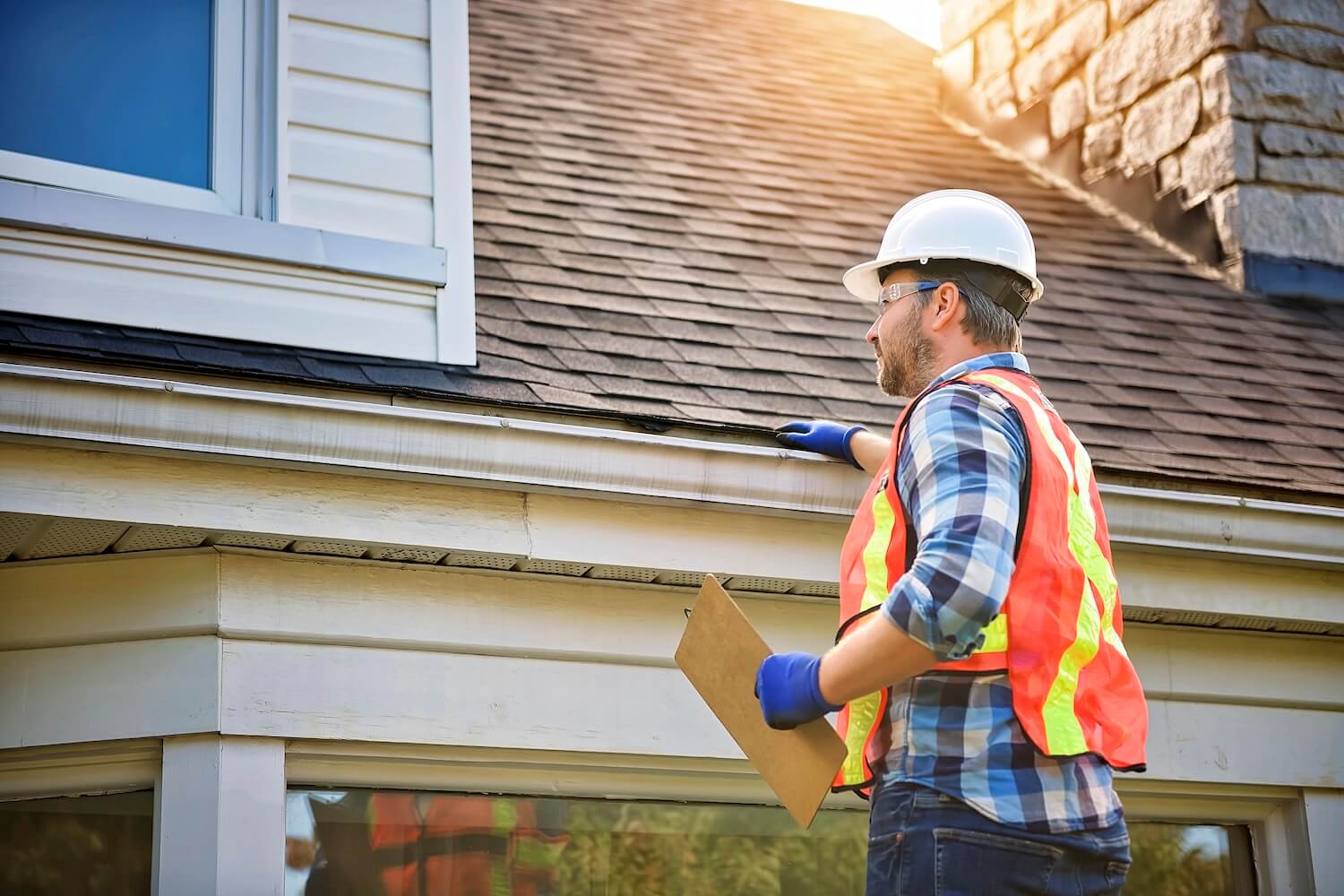Nestled in the heart of Oregon’s Willamette Valley, Springfield experiences a diverse climate characterized by wet winters, mild springs, and warm summers. This varied weather pattern presents unique challenges to residential and commercial roofing systems. Regular seasonal roof inspections are essential for homeowners in Springfield to ensure the longevity and durability of their roofs.

Understanding Springfield’s Climate and Its Impact on Roofs
Springfield’s climate is marked by significant rainfall during the fall and winter months, with occasional snow and ice. These conditions can lead to moisture accumulation, freeze-thaw cycles, and debris buildup on roofs. The extended wet season can cause roofing materials, especially asphalt shingles and wood shakes, to absorb moisture, leading to warping, rot, and structural degradation over time. The weight of accumulated snow and standing water can strain roof decking, especially on flat or low-slope roofs, exacerbating any underlying weaknesses.
Additionally, Springfield’s proximity to the Cascade foothills often brings strong wind gusts and intense storms, particularly in late autumn and early spring. These winds can lift or tear shingles, displace flashing, and send branches crashing onto rooftops, creating punctures or more extensive structural damage.
In the spring and summer, the region experiences drier conditions with increased sun exposure. While the sunshine is welcome, it also brings UV radiation that can deteriorate roofing materials, especially if they are already compromised by previous weather exposure. Prolonged exposure to sunlight can cause shingles to curl, crack, or become brittle, which reduces their ability to protect the home from water infiltration.
Homes in Springfield are also susceptible to moss and algae growth due to high humidity, frequent precipitation, and shaded areas, particularly on north-facing or heavily tree-covered roofs. Moss holds moisture against the roof surface, hastening the deterioration of shingles and underlayment. Algae, while more of an aesthetic concern, can stain shingles and indicate consistent moisture retention—a red flag for deeper issues.
Furthermore, nearby trees—common throughout Springfield’s neighborhoods and wooded surroundings—often drop leaves, needles, and branches that can clog gutters and collect on rooftops. This debris can form dense mats that retain moisture, encourage pest infestations, and block water drainage, leading to leaks and rotting fascia boards. Over time, this can weaken structural elements and lead to the growth of mold and mildew inside the attic or walls.
Another unique challenge in Springfield is the temperature fluctuation between day and night, especially in spring and fall. These temperature swings contribute to the thermal expansion and contraction of roofing materials. Without proper installation and ventilation, this cycle can create small cracks and splits, weakening the roof’s integrity over time.
The combination of all these factors means that a roofing system in Springfield must be durable, well-maintained, and regularly inspected to withstand the year-round challenges posed by the local environment. Understanding the nuances of the region’s climate is essential for homeowners who want to make informed decisions about roofing materials, maintenance schedules, and necessary upgrades to enhance their home’s resilience and longevity.
The Necessity of Seasonal Roof Inspections
Seasonal roof inspections are crucial for identifying and addressing potential issues before they escalate into costly repairs. By conducting inspections in the spring and fall, homeowners can ensure their roofs are prepared for the upcoming weather conditions.
Spring Inspections
After the harsh winter months, spring inspections help identify damage caused by snow, ice, and wind. Common issues to look for include:
- Missing or Damaged Shingles: Ice and wind can dislodge shingles, exposing the underlayment and roof deck.
- Clogged Gutters and Downspouts: Melting snow and early spring rains can cause gutters to overflow if they are not cleared.
- Moss and Algae Growth: These organisms thrive in a damp climate and can deteriorate roofing materials.
- Leaks or Water Stains in the Attic: Signs of leaks include discoloration on ceilings, warped wood, and musty odors.
- Cracked or Damaged Flashing: Flashing around chimneys, vents, and skylights can become loose or cracked, allowing water to seep in.
Addressing these problems early can prevent further deterioration and extend the roof’s lifespan.
Fall Inspections
Fall inspections prepare the roof for the upcoming winter by ensuring it is in optimal condition to withstand heavy rain, snow, and wind. Key areas to focus on include:
- Loose or Missing Shingles: Ensure shingles are intact to prevent water intrusion during winter storms.
- Flashing and Sealants: Check the integrity of flashing and reseal areas prone to water penetration.
- Gutter and Downspout Maintenance: Remove leaves and debris to allow for proper drainage.
- Ventilation and Insulation: Ensure your attic has proper airflow and insulation to reduce ice dam formation.
- Tree Limbs and Overhanging Branches: Trim nearby trees to prevent branches from falling on the roof.
Benefits of Regular Roof Inspections
1. Early Detection of Issues
Regular inspections allow homeowners to identify minor problems before they become major concerns. For example, a small leak detected during an inspection can be repaired promptly, preventing water damage to the interior of the home. Early detection also minimizes the disruption caused by larger, emergency repairs and maintains the structural integrity of the home.
2. Cost Savings
By addressing issues early, homeowners can avoid expensive repairs or premature roof replacements. Routine maintenance is more cost-effective than emergency repairs resulting from neglected problems. Preventive action can also help in managing budgets, as small repairs can be scheduled and planned without the pressure of an emergency.
3. Extended Roof Lifespan
Consistent inspections and maintenance can significantly extend the life of a roof. Well-maintained roofs are better equipped to handle the stresses of Springfield’s climate, reducing the likelihood of premature failure. In some cases, proactive care can extend the lifespan of a roof by up to 10-15 years beyond its expected service life.
4. Improved Energy Efficiency
A properly maintained roof contributes to better insulation and ventilation, leading to improved energy efficiency. This can result in lower heating and cooling costs for homeowners. For example, identifying and sealing gaps can prevent heat loss in winter and keep the house cooler in summer, reducing the strain on HVAC systems.
5. Enhanced Home Value
A well-maintained roof enhances the overall value of a home. Potential buyers are more likely to be interested in a property with a roof that has been regularly inspected and maintained. It also boosts curb appeal, a critical factor in real estate markets, and can be a deciding factor in a buyer’s choice.
6. Insurance Compliance
Regular roof inspections can also help with insurance claims. Some insurance policies require proof of maintenance to approve claims related to weather damage. Keeping detailed records of inspections can support your case in the event of damage. This documentation may also lead to lower premiums or more favorable terms, as it demonstrates a commitment to home upkeep.
7. Peace of Mind
Knowing that your roof has been inspected and is in good condition provides homeowners with peace of mind. This assurance is especially valuable during Springfield’s rainy seasons when the risk of leaks and water intrusion is highest. Regular inspections eliminate the anxiety of unforeseen roofing issues and instill confidence that the home is secure.
8. Environmental Responsibility
A well-maintained roof minimizes the need for premature replacement, reducing landfill waste and the consumption of new roofing materials. Regular inspections support a sustainable approach to home maintenance by promoting longevity and reducing environmental impact.
9. Prevention of Secondary Damage
Roofing issues often lead to problems in other areas of the home, such as walls, ceilings, electrical systems, and insulation. By maintaining the roof through regular inspections, homeowners can avoid these secondary damages, which are often more expensive and complex to repair than the original roofing issue.
10. Better Planning for Replacement
Regular inspections provide valuable insights into the roof’s condition and remaining service life. This allows homeowners to plan and budget for eventual replacement rather than being caught off guard by a sudden failure. With proper timing, homeowners can research materials, choose qualified contractors, and avoid peak-season pricing.
What to Expect During a Professional Roof Inspection
A comprehensive roof inspection conducted by a qualified contractor typically includes:
- Exterior Inspection: The contractor will examine the shingles, gutters, flashing, chimney, vents, and any other roof components visible from the outside.
- Interior Inspection: They will check the attic and ceiling for signs of leaks, mold, or poor ventilation.
- Moisture Detection: Tools like infrared cameras and moisture meters can detect hidden leaks and water damage.
- Structural Assessment: The inspector will evaluate the overall structure for sagging or weakness.
- Detailed Report: A written report with photos and recommendations for repairs or maintenance will be provided.
DIY Tips Between Professional Inspections
While professional inspections are essential, homeowners can also take proactive steps between visits:
- Use binoculars to spot missing shingles or damaged flashing.
- Clean gutters and downspouts regularly.
- Watch for signs of leaks inside the house.
- Keep the roof clear of debris.
- Trim tree limbs away from the roofline.
Choosing a Professional Roofing Contractor in Springfield
When selecting a roofing contractor for inspections and maintenance, homeowners should consider the following:
- Experience and Reputation: Choose a contractor with a proven track record and positive customer reviews.
- Licensing and Insurance: Ensure the contractor is licensed and carries appropriate insurance coverage.
- Comprehensive Services: Opt for a contractor who offers a full range of services, including inspections, repairs, and maintenance.
- Local Knowledge: A contractor familiar with Springfield’s climate and common roofing issues will be better equipped to provide effective solutions.
- Warranties and Guarantees: Reputable contractors offer warranties on their work and use high-quality materials.
Real-World Examples in Springfield
Many Springfield homeowners have experienced the benefits of seasonal inspections firsthand. For instance, a local family noticed a slight water stain on their ceiling during a spring cleaning session. A prompt inspection revealed a small leak caused by wind-damaged flashing. The issue was fixed quickly and affordably, avoiding major interior repairs.
Another example involved a commercial property whose roof had sustained unnoticed damage during a windstorm. A fall inspection revealed loose flashing and clogged drainage systems, which were addressed before winter arrived, preventing costly water intrusion.
Conclusion
Seasonal roof inspections are a vital component of home maintenance in Springfield, Oregon. The region’s dynamic climate demands proactive care to ensure roofs remain durable and weather-resistant throughout the year. By identifying and addressing potential issues early, homeowners can protect their investment, extend the life of their roofs, and ensure the safety and comfort of their homes.
Partnering with a reputable local roofing contractor for regular inspections and maintenance is a wise decision that pays dividends in the long run. Ultimately, seasonal inspections provide peace of mind, financial savings, and the assurance that your roof is always ready to face the elements.










